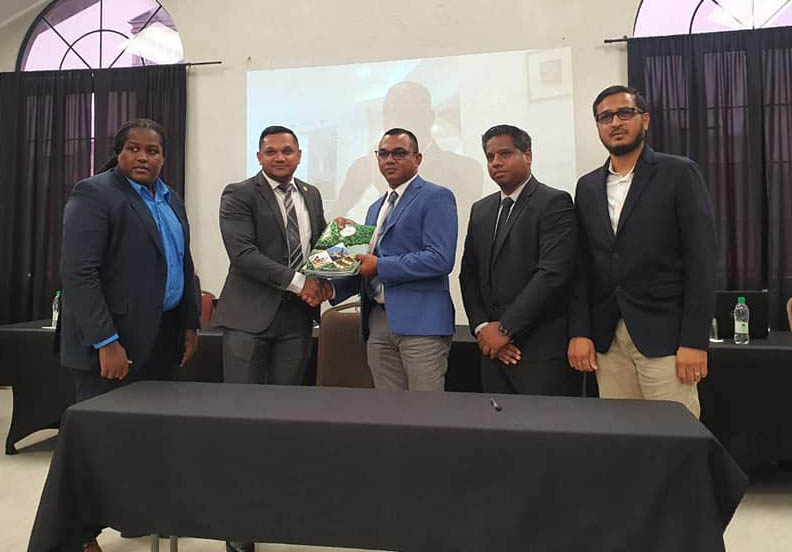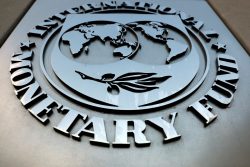Civil society group, the Oil and Gas Guyana Network (OGGN) has raised questions about the depth of an audit of US$7.3b in ExxonMobil expenses for the years 2018 to 2020 but said that even the basic findings warrant a full-scale forensic examination being commissioned by the government.
In a letter in yesterday’s Stabroek News OGGN noted that the Ramdihal, Haynes, Vitality Consulting, and Eclisar Financial & Professional (RHVE) with Martindale Consulting and SGS encompassed 260,000 transactions, totaling US$7.3 billion, for the Stabroek Block for the period 2018 to 2020 and was completed in 4 months.
The report is still to be finalized and has not been publicly released. How-ever, it has been seen by Stabroek News.
OGGN said that the size of the audit team appeared to be about 12 people; a few members were Guyanese and it assumed that the Guyanese members had no prior experience in auditing oil & gas transactions.
“It is almost impossible for such a team, in that short time period, to verify 260,000 transactions thus they sampled transactions and ignored small transactions. Where small transactions seem to be anything less than US$1,000. It appears no materiality, an accounting criteria, was formally defined by the auditing team which raises concerns about the quality of the audit. What is not clear is what percentage of the 260,000 transactions were sampled and how many fell into the bucket of too small to audit”, the group said.
OGGN said that it was natural that the audit team would focus during those four months on the simpler ‘cake shop’ accounts. It noted that in a series covered by Kaieteur News, there is no mention of the ‘big ticket’ engineering items of the offshore expenses, what it takes to explore and extract the oil from ultra-deep fields. OGGN wondered if the audit team had the oil field expertise to check on the validity of ExxonMobil Guyana costings relative to the big items mentioned as cost-recoverable in Annex C of the 2016 Production Sharing Agreement.
“In any case, the big-ticket engineering items do need to be scrutinised with as much or more care as the go-karting and Zumba lessons have been in the recent cost-recovery audits, since the huge ticket values have a potentially great effect on the money flows to Guyana. Of course, a thorough forensic audit will cost more and take longer, but USD 214 million has already been detected, from the 1999 to 2017 IHS Markit audit, as mis-allocated. That recent audit shows the risks of not paying timely attention or having requisite technical skills. Whether the team did or did not have such expertise, for the 2018-2020 audit, clearly the time and money allowed for this sample cost-recovery audit was not enough for a thorough investigation. The findings of this limited-scale audit have easily paid for the cost of the audit.
“What the team did uncover is surely enough to justify a full-scale forensic audit of the 2018-2020 accounts of ExxonMobil Guyana. OGGN urges the Government to commission such an audit immediately and to insist on this kind of audit for all subsequent years”, the group said.
It added that the Office of the Auditor General and the Guyana Revenue Authority should be in close contact with the US Securities and Exchange Commission and the US Internal Revenue Service to check on transfer pricing and other means by which the ExxonMobil Guyana may be trying to inflate costs and reduce legitimate taxes. OGGN noted that it has advocated for a Gross-Split Model where Guyana receives 55 out of every 100 barrels of oil (see https://www.oggn.org/ 2023/08/26/an-alternative-psa-model-such-as-the-gross-split-model-eliminates-contested-areas-in-current-contract/) This, it said, would eliminate situations like this one where there is a now a need to verify 260,000 transactions worth US$7.3 billion, a complex and costly task that is required to be performed in a short timeframe.
Stabroek News had reported that the final report for the RHVE audit challenged around only 1.3% of the US$7.3b total – much less than the 12.8% in the first audit of the US$1.67b by UK auditing firm IHS Markit. Most of the challenged amount related to small-ticket items and expenditures unrelated to oil and gas operations, raising questions about the sampling.
Complex system
The RHVE audit report had said that the company assigns costs using a complex system and while only a small figure, some expenses were above what they should be and included a transfer pricing percentage.
“EEPGL’s accounting is extremely tedious, requiring intensive concentration and diligence to understand… EEPGL has more than 180 Cost Objects that costs are booked into, with many of those costs then flowing into a second Cost Objects and then further broken down into other tiers. There are several instances where a cost booked into a Cost Object must be traced through five levels of allocations to see the eventual charge or allocation,” the report seen by the Stabroek News stated.
RHVE said that during the auditing process, EEPGL sought to justify the flagged expenses.
“EPGL insists that all capital costs should be paid 100 per cent by Stabroek even though Kaieteur and Canje Blocks utilise the offices or shorebase or other facility. The rationale offered by EEPGL’s personnel was “if it wasn’t for Stabroek, ExxonMobil would not be in Guyana…We find that position fatuous and unsupportable,” the report said.
“EEPGL believes all in-country personnel are 100 per cent chargeable to either Stabroek, Kaieteur, or Canje, or another operation, if any, but that no payroll costs should be allocated as a 100%-corporate cost. We disagree; our position is that a portion of almost all non-operations personnel time, starting with the EEPGL President, should be absorbed by EEPGL as a 100% non-recoverable cost,” RHVE noted while explaining its justifications in appendices with supporting documents.
And similar to payroll, although to a slightly lesser extent, EEPGL believes costs for almost all in-country activities are recoverable. “We disagree. EEPGL has credited the Cost Recovery Statement for many non-recoverable costs, perhaps knowing an audit would call attention to them, but they did not reverse all that are not recoverable,” the report said.
“ExxonMobil Affiliates are required to charge at-cost for their services. The rates at which they charge Stabroek are at the rates reported by PricewaterhouseCoopers to be at cost, so those rates are accepted. However, ExxonMobil adds a “transfer pricing” percentage to each Affiliate charge. EEPGL acknowledged this is a “profit margin” component that must be added to the at-cost rates so the Affiliate can show a profit in its home country, so the home country has corporate profits to tax. We do not believe that is a recoverable cost,” the auditors contended.
And when the company trained three local engineers in Houston, it billed to cost recovery much higher affiliate rates instead of the trainees’ salaries.
“Another interesting ExxonMobil internal accounting item that results in excess costs charged to the Cost Recovery Account is when three Guyanese local engineers trained for seven months in ExxonMobil’s Houston office. Instead of continuing to charge their actual salaries, as was done before and after the training, EEPGL charged them at the much higher Affiliate rates, instead of their actual salaries, which did not change, simply because of internal accounting,” the auditors said.
The audit explained that actual salaries, wages, and benefits of local EEPGL employees are booked directly to a “local” pool Cost Object. The local pool costs are then allocated to various departmental Cost Objects based on headcount, such as drilling, logistics management, geoscience, operations and financial, technical, procurement, general management, public affairs and so forth. Costs for each of these departments are then allocated between Block(s), such as Stabroek, Kaieteur, and Canje, based on the respective Cost Object department metric, such as work effort studies, headcounts, time writing hours, or drilling activity.
But the audit noted that “tracking the actual allocation of a specific employee’s time is tedious due to the numerous Cost Objects and allocation levels.”
It said the company’s employee costs are recoverable if the proper amount is allocated to the Stabroek Block out of each department. “The allocation percentage of each department Cost Object was scrutinized, with numerous exceptions in the report for instances where we do not believe 100% of a department’s costs should be charged 100% to Stabroek/Canje/Kaieteur operations, that a portion pertains to corporate and other non-recoverable tasks and responsibilities,” the audit says.
The auditors also believe, the audit pointed out, that the costs discussed with relation to its Economic Development Center are valid; when they assert “many of the early costs were indeed for Petroleum Operations.”
Noted also in the audit was that the company would not discuss production figures details with auditors saying that it was not part of cost recovery.
The government has not stated its position on this report thus far.










